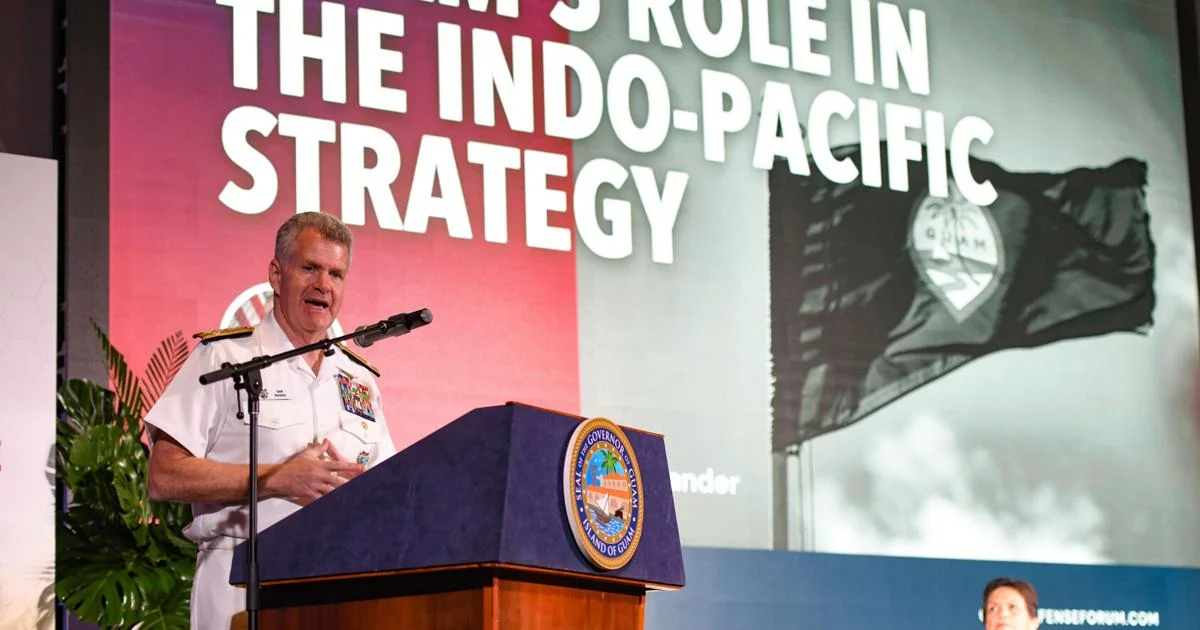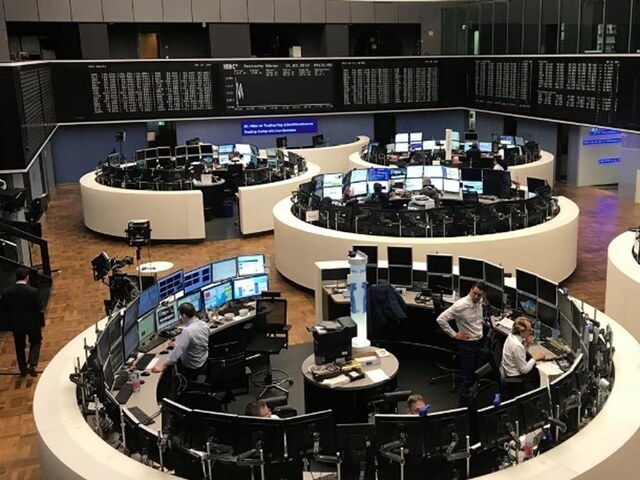Paparo: $8B Guam missile defense is Pentagon’s ‘largest investment’ in Pacific; Governor says ‘human security’ needed
By By Joe Taitano II Pacific Daily News
Copyright guampdn

The $8 billion missile defense system planned for Guam is the Department of War’s “largest investment” in the Pacific, the head of the Indo-Pacific Command, Adm. Samuel Paparo, said on Wednesday.
But Gov. Lou Leon Guerrero and others repeated concerns about how the people, construction, and equipment needed for the new system will impact the island.
Paparo was the keynote speaker at the Guam Defense Forum hosted by the Office of the Governor at Dusit Thani Guam Resort. The two-day forum kicked off Wednesday.
The admiral told government officials and members of the public present that the “Guam Defense System” is the island and nation’s first line of defense, amidst accelerating aggression from China and its allies in the Pacific.
Wednesday’s forum comes just weeks after the Pentagon firmed up plans to proceed with the 360-degree “Guam Defense System,” and awards for the system topped $1.8 billion. Construction could start before the year’s end.
Paparo said the new system and Guam will be at the center of “America’s Pacific century.”
Besides protecting the island from ballistic cruise missiles and new hypersonic weapons, the system will create hundreds of new jobs and open the door for development of an advanced manufacturing workforce on the island, he said.
“The Guam Defense System will endure throughout this Pacific century as both a shield for America and an engine for Guam,” Paparo said.
Brig Gen. William Parker, of the 94th Army Air and Missile Defense Command, said the system “will have capability” by 2027, and “will continue to mature and improve over time.”
Parker, who is in charge of missile defense for the Indo-Pacific, said the Guam system will have the latest equipment the Army has available.
Some of those capabilities have never been fielded before, he said.
The Missile Defense Agency in December touted the success of the first live test for the new system. Up to two tests annually are expected through the next decade.
But a report released by the Government Accountability Office found that the Pentagon’s plans lacked some of the most basic building blocks needed to sustain it, like a fully defined strategy or accurate troop count.
Local officials have also called for the federal government to fund the construction of bomb shelters and other civilian defense infrastructure, in addition to missile defense.
‘Dangerous course’
Paparo underscored increasing activity by the Chinese People’s Liberation Army around the Strait of Taiwan.
“Their maneuvers around Taiwan are not exercises. They are rehearsals for forced unification,” the admiral said.
War games consistently point to a strike on Guam as likely, should a U.S.-China conflict erupt over Taiwan.
Paparo on Tuesday said the Chinese PLA conducted more joint rehearsals last year than he had seen in 38 years of service.
“On one day, the PLA surged 152 warships, three quarters of its amphibious force…over 200 landing craft with 43 brigades of naval infantry,” he said.
China in April rehearsed a blockade of Taiwan with 76 aircraft and 15 ships, as the PLA’s rocket force fired missiles on targets resembling Taiwan’s ports and airfields, the admiral said.
Paparo also pointed to increasing cooperations between China, Russia, and North Korea, with joint Russian and Chinese naval patrols now moving across the Pacific.
Taiwan 2027
A 2027 goal set by China President Xi Jinping for his military to be ready to invade Taiwan was not a “sell-by date” for conflict, Paparo said.
But the PLA was on track to meet its 2027 goals, and Indo-Pacom was closely monitoring it.
“It’s not a number that we approach with any sense of fatalism. If anything, it’s a number that inspires us. It makes us more vigilant,” he said.
‘Human security’
Several speakers and attendees at the Wednesday forum, including the governor, pointed to the need for the military to address the impacts of the missile defense system.
Leon Guerrero again said she was not satisfied with military efforts made before proceeding with the plan. Protecting Guam meant more than defending its land, she said.
“Let me be clear: there is no national security without human security—without hospitals that heal, schools that teach, utilities that sustain, cyber systems that defend, and homes and jobs that keep families safe,” Leon Guerrero said in her opening remarks for the forum.
She said the United States could not rely on Guam to project force into the region without also uplifting Guam.
“We expect not charity, but fairness,” she said.
‘Tipping point’
Robert Underwood, chair of defense think-tank Pacific Center for Island Security, said the current militarization of Guam rivals even the post-World War II buildup of the island.
“The people of Guam are being asked to share a disproportionate burden of this response to the China-U.S. competition,” he said. “The question then becomes, I think, for political leadership and for the community, is, where is the disproportionate gain from all this?”
A tipping point would come when the burden outweighed the gain, Underwood, a former Guam delegate to Congress, said.
“When does the community of Guam have the authority to say, ‘No, we’re not going to go down that road anymore’?” he said. “I don’t think we have that now.”
Sen. Sabina Perez said the island still does not have full self determination, and has seen increasing poverty, degradation of the environment, and a critical shortage of affordable housing for residents.
She pointed to recent plans announced by the Navy to secure 1,300 homes by 2028, and said Guam was left out of initial talks about the relocation of thousands of Marines from Okinawa to the island.
“What you brought…have said here today will further that trajectory into degradation of our lands and harming our civil community here,” she said.
Paparo responded that the military pledged to be transparent, and respectful in working with the community.
“Our build up of the Guam defense system is in response to aggression. It is not designed to place a greater burden on Guam,” he said. “It is designed to give greater peace and greater security to Guam.”



